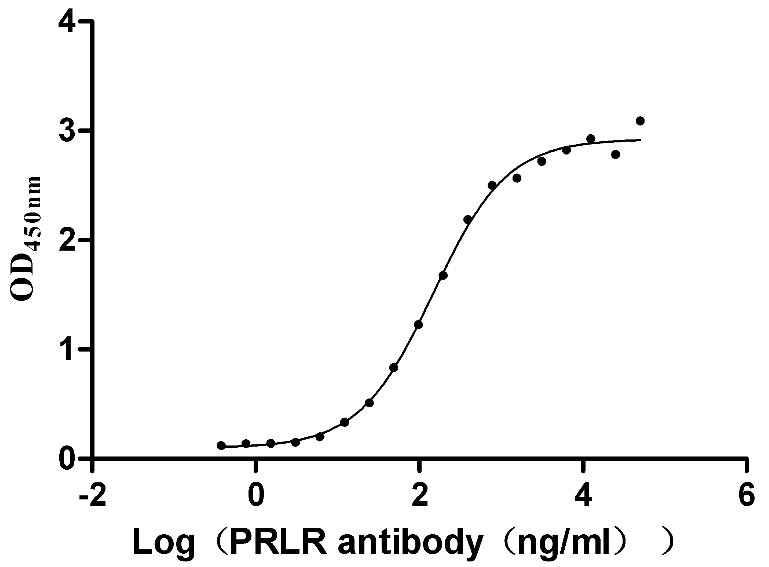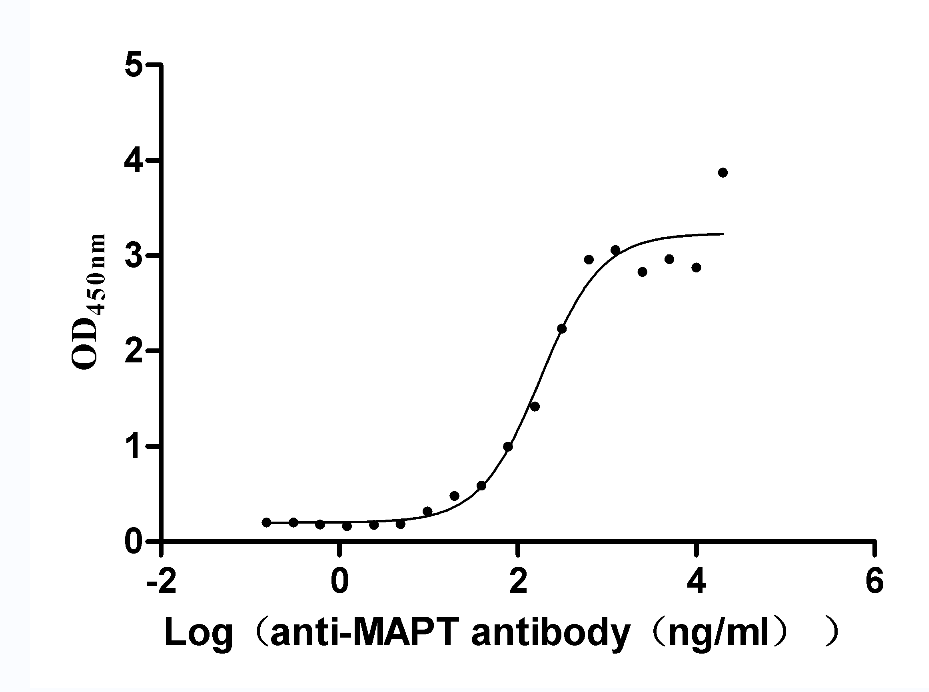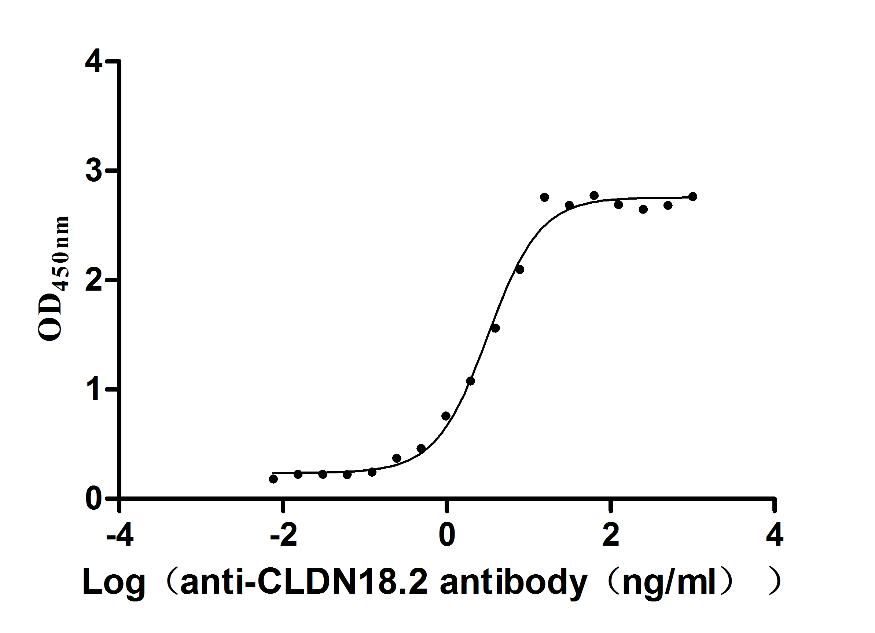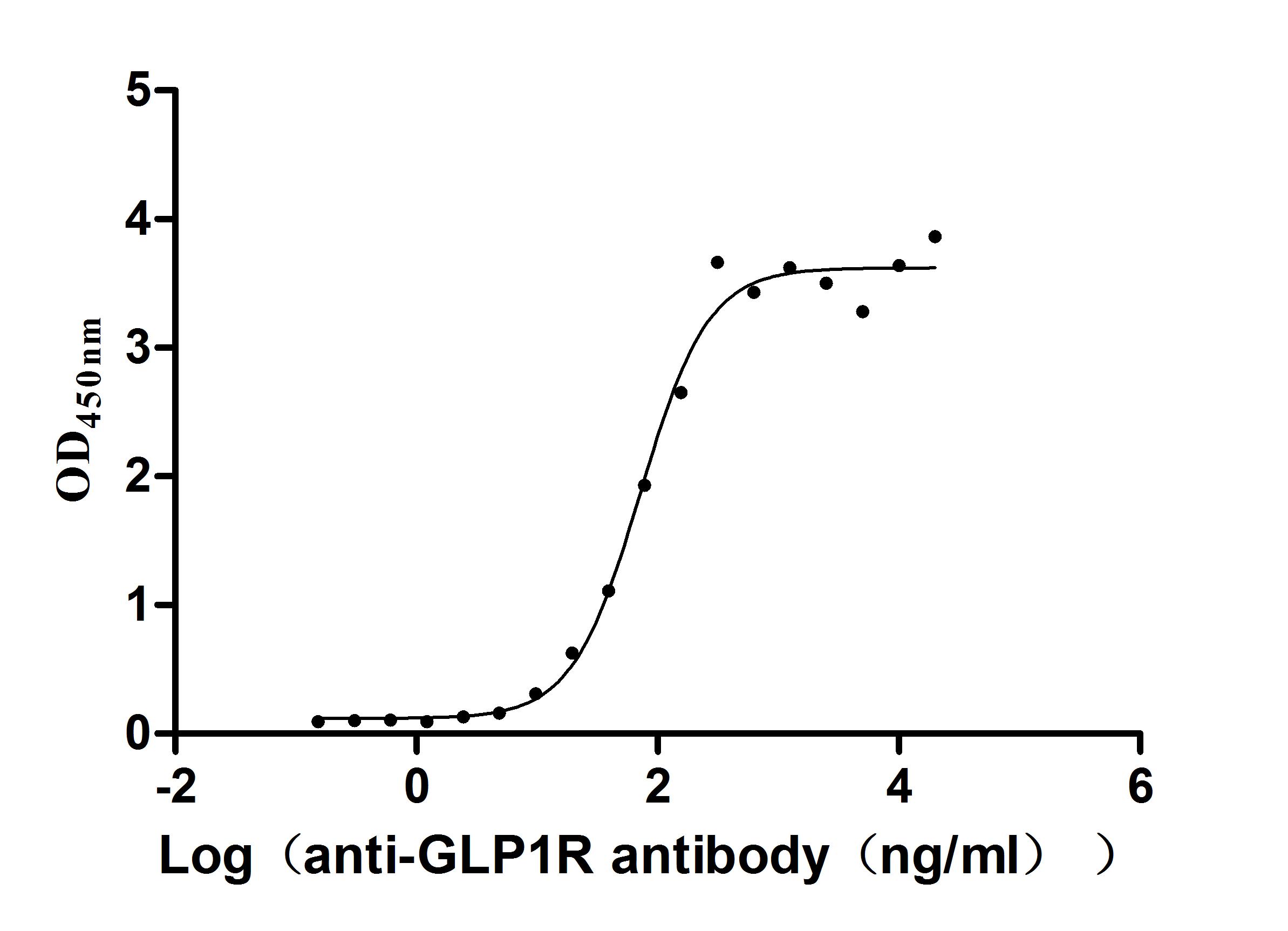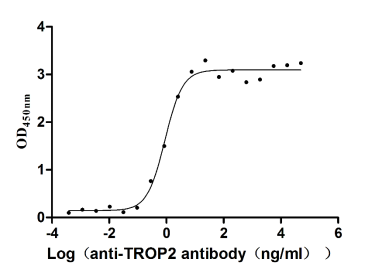Recombinant Mouse Peripherin-2 (Prph2)
-
中文名稱:小鼠Prph2重組蛋白
-
貨號(hào):CSB-CF018775MO
-
規(guī)格:
-
來源:in vitro E.coli expression system
-
其他:
產(chǎn)品詳情
-
基因名:Prph2
-
Uniprot No.:
-
別名:Prph2; Rds; Peripherin-2; Retinal degeneration slow protein
-
種屬:Mus musculus (Mouse)
-
蛋白長度:Full length protein
-
表達(dá)區(qū)域:1-346
-
氨基酸序列MALLKVKFDQKKRVKLAQGLWLMNWLSVLAGIVLFSLGLFLKIELRKRSEVMNNSESHFV PNSLIGVGVLSCVFNSLAGKICYDALDPAKYAKWKPWLKPYLAVCIFFNVILFLVALCCF LLRGSLESTLAYGLKNGMKYYRDTDTPGRCFMKKTIDMLQIEFKCCGNNGFRDWFEIQWI SNRYLDFSSKEVKDRIKSNVDGRYLVDGVPFSCCNPSSPRPCIQYQLTNNSAHYSYDHQT EELNLWLRGCRAALLNYYSSLMNSMGVVTLLVWLFEVSITAGLRYLHTALESVSNPEDPE CESEGWLLEKSVPETWKAFLESFKKLGKSNQVEAEGADAGPAPEAG
Note: The complete sequence may include tag sequence, target protein sequence, linker sequence and extra sequence that is translated with the protein sequence for the purpose(s) of secretion, stability, solubility, etc.
If the exact amino acid sequence of this recombinant protein is critical to your application, please explicitly request the full and complete sequence of this protein before ordering. -
蛋白標(biāo)簽:N-terminal 10xHis-tagged
-
產(chǎn)品提供形式:Liquid or Lyophilized powder
Note: We will preferentially ship the format that we have in stock, however, if you have any special requirement for the format, please remark your requirement when placing the order, we will prepare according to your demand. -
緩沖液:Lyophilized from Tris/PBS-based buffer, 6% Trehalose, pH 8.0
-
儲(chǔ)存條件:Store at -20°C/-80°C upon receipt, aliquoting is necessary for mutiple use. Avoid repeated freeze-thaw cycles.
-
保質(zhì)期:The shelf life is related to many factors, storage state, buffer ingredients, storage temperature and the stability of the protein itself.
Generally, the shelf life of liquid form is 6 months at -20°C/-80°C. The shelf life of lyophilized form is 12 months at -20°C/-80°C. -
貨期:Basically, we can dispatch the products out in 1-3 working days after receiving your orders. Delivery time may differ from different purchasing way or location, please kindly consult your local distributors for specific delivery time.Note: All of our proteins are default shipped with normal blue ice packs, if you request to ship with dry ice, please communicate with us in advance and extra fees will be charged.
-
注意事項(xiàng):Repeated freezing and thawing is not recommended. Store working aliquots at 4°C for up to one week.
-
Datasheet & COA:Please contact us to get it.
相關(guān)產(chǎn)品
靶點(diǎn)詳情
-
功能:Essential for retina photoreceptor outer segment disk morphogenesis, may also play a role with ROM1 in the maintenance of outer segment disk structure. Required for the maintenance of retinal outer nuclear layer thickness. Required for the correct development and organization of the photoreceptor inner segment.
-
基因功能參考文獻(xiàn):
- ablation of Rom1 results in the conversion of an MD/PD phenotype characterized by cone functional defects and the formation of abnormal Prph2/Rom1 complexes to an RP phenotype characterized by rod-dominant functional defects and reductions in total Prph2 protein. Thus one method by which ROM1 may act as a disease modifier is by contributing to the large variability in PRPH2-associated disease phenotype PMID: 28053051
- quantitative FRET analysis in acutely isolated cone OS revealed that the cone degeneration-causing V268I mutation in peripherin-2 selectively reduced binding to M-opsin without affecting the peripherin-2 interaction to S-opsin or rhodopsin PMID: 27033727
- These results support the idea that mutations may differentially affect Prph2's role as a structural component, and its role as a functional protein key for organizing membrane domains for cellular signalling. These roles may be different in rods and cones, thus contributing to the phenotypic heterogeneity that characterizes diseases associated with Prph2 mutations. PMID: 27365499
- Eliminating Cngb1 and reducing RDS leads to additive defects in RDS expression levels and rod electroretinogram (ERG) function, (e.g., Cngb1-/-/rds+/- versus rds+/- or Cngb1-/-) but not to additive defects in rod ultrastructure. PMID: 26934134
- In the group of mice manifesting homozygous mutation in the PRPH2 gene. PMID: 27116862
- Our data suggest that upregulation of PRPH2 levels in combination with defects in the PRPH2 function caused by the mutation might be an important mechanism leading to cone degeneration. PMID: 26796962
- These data suggest that glycosylation of RDS is required for RDS function or stability in cones, a difference that may be due to extracellular versus intradiscal localization of the RDS glycan in cones versus rods. PMID: 26420485
- These data support a model of pattern dystrophy wherein a primary molecular defect occurring in all photoreceptors leads to secondary sequellae in adjacent tissues, an outcome which leads to macular vision loss. PMID: 25001182
- Peripherin-2 links CNGB1 to the light-detector rhodopsin in outer segments of rod photoreceptors. PMID: 24963162
- Expression of R172W mutation in cones induced subtle alterations in RDS/ROM-1 complex assembly, specifically resulting in the formation of abnormal, large molecular weight ROM-1 complexes. Fundus imaging demonstrated that R172W mice developed macular degeneration. PMID: 24463884
- Correcting the levels of RDS gene expression does not improve the phenotype of the rd7 model of enhanced S-cone syndrome. PMID: 23650562
- Structural characterization of the mechanism of RDS complex formation and the disease process underlying RDS-associated retinal degeneration. PMID: 23121719
- Oligomerization incompetent retinal degeneration slow is associated with mislocalization of cone opsins and cone transducin. PMID: 22183390
- These results suggest that while normal outer segment structure and function require RDS oligomerization, some RDS function is retained in the absence of C150. PMID: 20238000
- RDS does not interact with the cone CNG. PMID: 20238003
- These data highlight significant differences in assembly, trafficking and function of RDS in rods versus cones. PMID: 20858597
- Based on these findings, a relatively small fragment of the Rds promoter may be useful in future gene transfer studies to drive gene expression in photoreceptors. PMID: 20447394
- Two mutations at codon 244 in RDS confer different disease phenotypes: Asn244His and Asn244Lys RDS exhibit many of the abnormal biochemical hallmarks of traditional loss-of-function and gain-of-function mutations. PMID: 20055437
- Erythropoietin was neuroprotective to the photoreceptors in the rds mouse. PMID: 19591826
- Findings suggest that successful gene therapy in patients with photoreceptor defects may ultimately depend upon intervention in early stages of disease and upon accurate control of transgene expression. PMID: 11689482
- Although Peripherin-2 gene replacement therapy only partially restores photoreceptor morphology, it results in a 300% increase of the visual cycle protein rhodopsin, leading to retinal function improvement. PMID: 14962744
- R172W protein was more sensitive to tryptic digestion, indicative of a change in protein conformation, possibly contributing to the cone-dominated phenotype. PMID: 15254014
- We generated transgenic mice expressing P/rds with the C214S missense mutation and crossed them into rds mutant mice to elucidate the mechanism underlying the pathology of autosomal dominant retinitis pigmentosa. PMID: 15656787
- This study demonstrates the important role of the N-terminal portion of the peripherin (P)/rds second intradiscal (D2) loop and identifies the region between Cys165 and Asn182 as the domain for association of P/rds and its partner Rom-1. PMID: 15779916
- analysis of rds-peripherin in retinal organotypic culture by RNA interference PMID: 16419083
- This study provides novel insight into the distinct role of Rds in the OS development of rods and cones. PMID: 16585269
- melanoregulin regulates peripherin-2 function PMID: 17260955
- The R172W mutation leads to dominant cone degeneration in the mouse model, regardless of the expression level of the transgene. PMID: 18055786
- Histologic analysis of homozygous mutant mice at 6 weeks indicated an absence of outer segments (OS) and a 50% reduction of photoreceptor cells which progressed to complete loss of photoreceptors by 10 months. PMID: 18763016
- Rds C150S mutation failed to form higher-order Rds oligomers, although interactions between C150S-Rds and Rom-1 occurred in rods, but not in cones. PMID: 19050038
顯示更多
收起更多
-
相關(guān)疾病:Responsible for retinal degeneration slow (Rds) (PubMed:8530028).
-
亞細(xì)胞定位:Membrane; Multi-pass membrane protein. Cell projection, cilium, photoreceptor outer segment. Photoreceptor inner segment.
-
蛋白家族:PRPH2/ROM1 family
-
組織特異性:Expressed in the retina (at protein level).
-
數(shù)據(jù)庫鏈接:
Most popular with customers
-
Recombinant Human papillomavirus type 16 Protein E7 (E7) (Active)
Express system: E.coli
Species: Human papillomavirus type 16
-
Recombinant Human Poliovirus receptor (PVR) (I340M), partial (Active)
Express system: Mammalian cell
Species: Homo sapiens (Human)
-
Recombinant Human Prolactin receptor (PRLR), partial (Active)
Express system: Mammalian cell
Species: Homo sapiens (Human)
-
Recombinant Rat Microtubule-associated protein tau (Mapt) (Active)
Express system: Mammalian cell
Species: Rattus norvegicus (Rat)
-
Recombinant Macaca fascicularis Claudin 18.2 (CLDN18.2)-VLPs (Active)
Express system: Mammalian cell
Species: Macaca fascicularis (Crab-eating macaque) (Cynomolgus monkey)
-
Recombinant Human V-set and immunoglobulin domain-containing protein 4 (VSIG4), partial (Active)
Express system: Mammalian cell
Species: Homo sapiens (Human)
-
Recombinant Human Glucagon-like peptide 1 receptor (GLP1R), partial (Active)
Express system: Mammalian cell
Species: Homo sapiens (Human)
-
Recombinant Human Tumor-associated calcium signal transducer 2 (TACSTD2), partial (Active)
Express system: Mammalian cell
Species: Homo sapiens (Human)


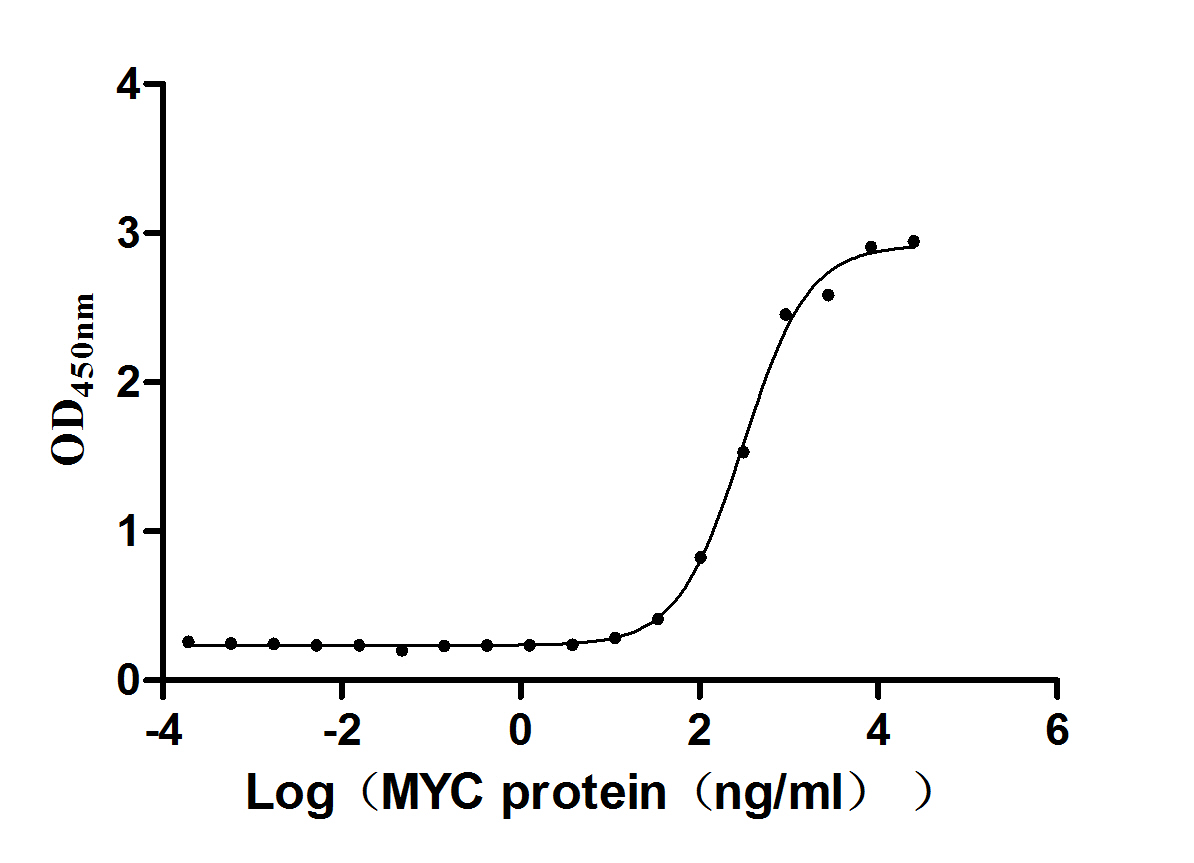
-AC1.jpg)
